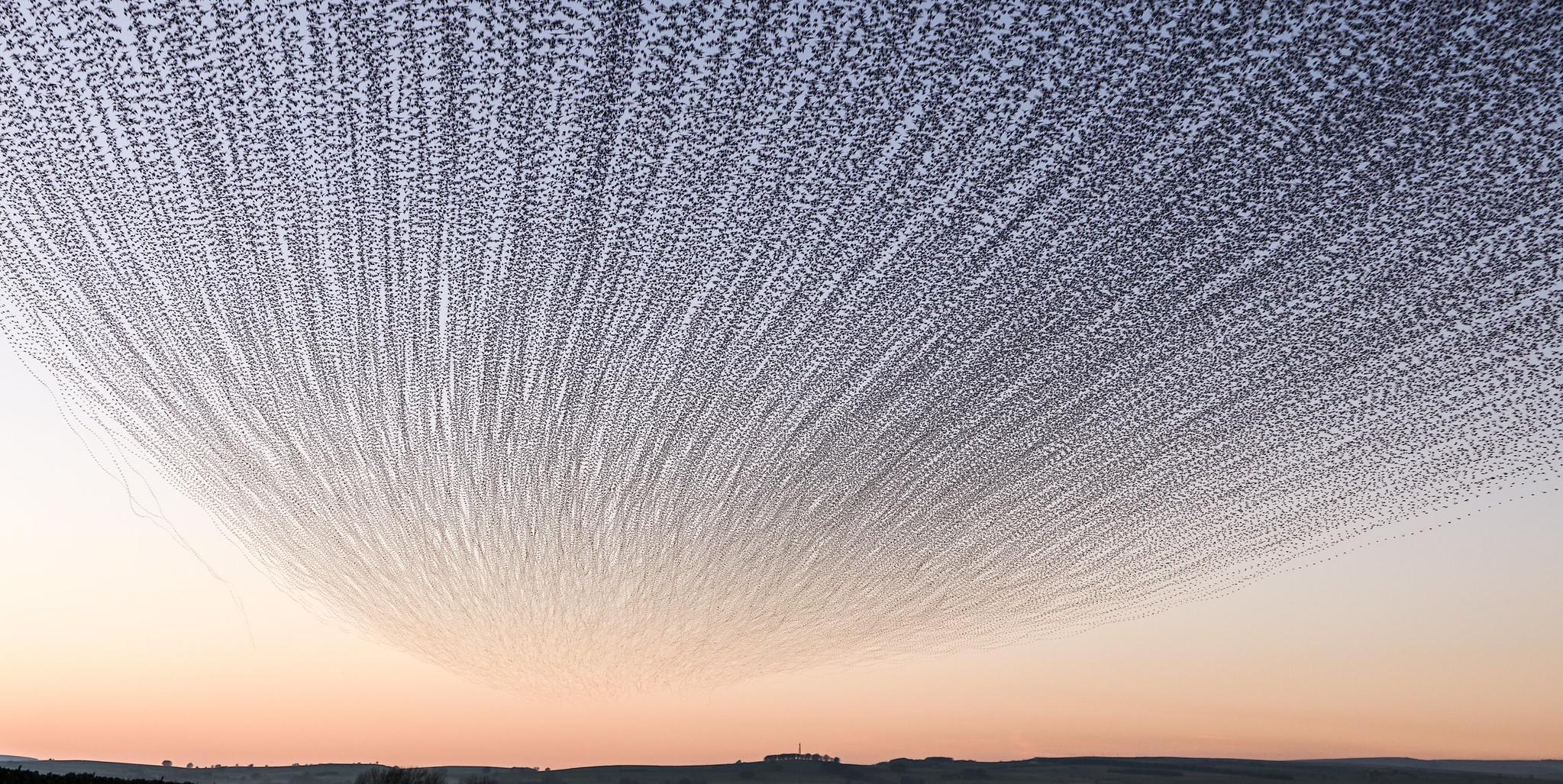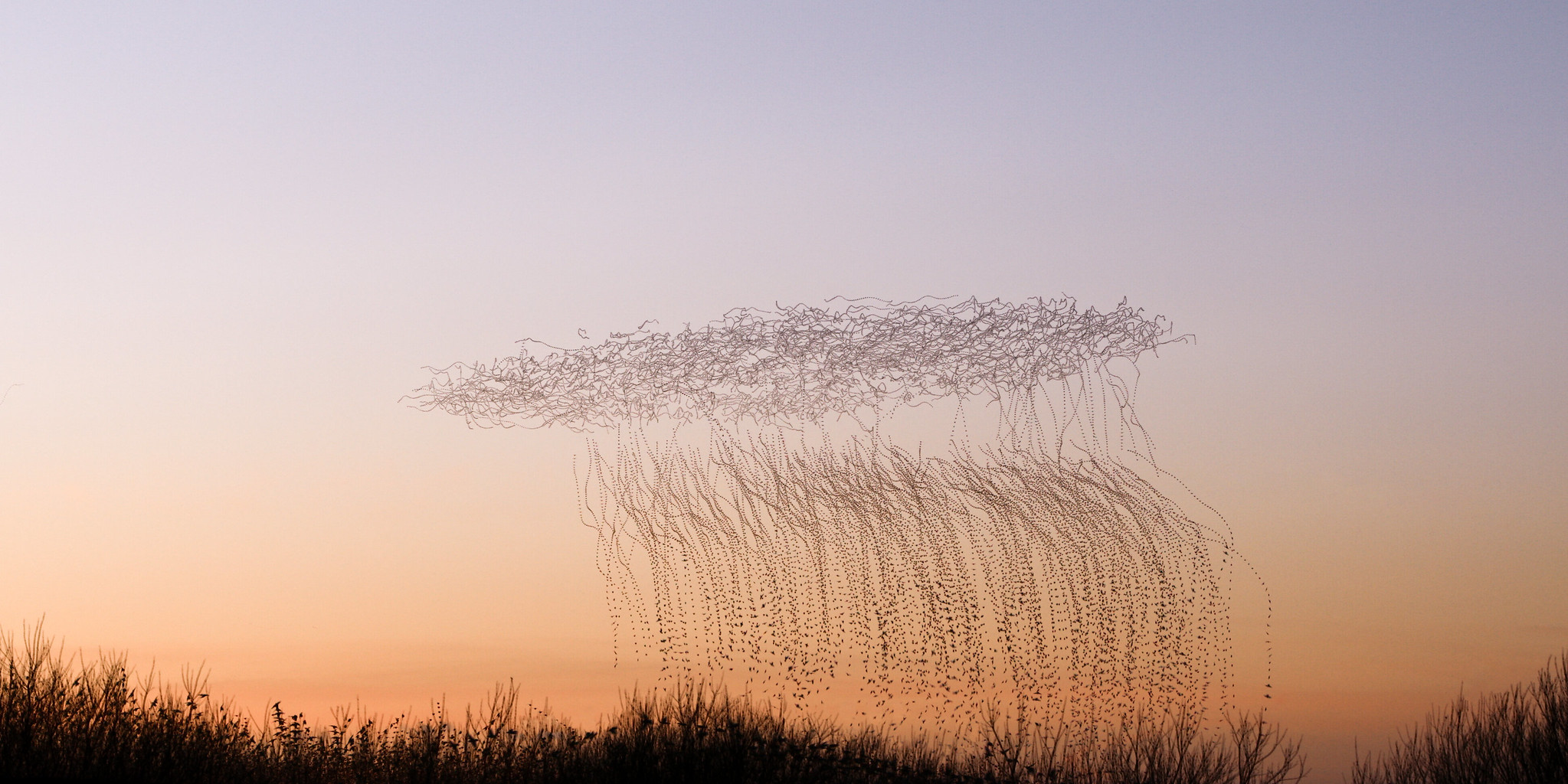.png)

Sparrowhawk and peregrine falcons hunt the smaller birds and make forays into the swirling mass of starlings, sometimes returning moments later with a bird in its talons. Despite their numbers, the starlings are not easy prey. Most aerial predators hunt by locking onto a single target. They will seek to pick off birds at the margins but the constant movement, changes of density, and twists and turns of the flock is visually confusing. The starlings tend to form larger groups and murmurate for longer when predators are present, preferring to dive into the safety of the roost together.
In a flock of starlings, nature has evolved a system that is robust to predation; where many eyes look out for attack, and where risk is shared amongst the group. Remarkably, the group achieves this without any leadership structure, the simple interactions between individuals creating outcomes greater than the sum of their parts.
Whether the flock is large or small, a few simple rules explain much of the behaviour that we see. Each bird responds only to the few birds around it, ensuring that it flies at the same speed and in the same direction as its neighbours, while avoiding collision. This means that when one bird turns to avoid attack from a falcon, the birds around it also turn. Their neighbours will turn a split second later and so on, sending a wave of information through the flock. When these simple local rules are scaled up they result in the complex and seemingly coordinated movements of a murmuration.
In this collection, murmurations dancing across the sky are transformed into dynamic patterns that reveal behaviour invisible to the naked eye.

Out of nowhere. As dusk approaches, groups of starlings arrive in dribs and drabs, coming in to roost after feeding in the fields. Then, as if out of nowhere, thousands of birds appear on the horizon.

Trails at Dusk. Birds gather in the surrounding trees and trickle in to join the flock as the numbers rise.

Pirouette. Small groups of starlings circle above the reeds, performing rapid turns before diving down to roost.

The chase. My main aim this winter was to capture some predator-prey interaction. I could see glimpses of the flock being split by the predators but the fast pace and rapid changes of direction made planning my shots difficult.

Into the Reeds. The starlings commit en masse for the reed bed, approaching fast and low, swooping into the safety of the vegetation.

Bait ball. Even when the hawks are elsewhere the predators have the starlings on edge and the flock twists and turns as if being pursued. The swirling mass of birds can seem to appear out of nowhere, and just as quickly vanish. The fleeting shapes and patterns are a result of a precise mix of weather, season, food and predation and will never again be repeated.

Dementor II. The starling that turns to avoid a falcon attack is followed by its nearest neighbour — this behaviour ripples through and redirects the entire group.

Meteor. On a gusty November evening, instead of forming a large flock, the starlings arrive in small groups. After a few seconds of rapid twists and turns the whole group plunges into the reeds, safe for the night.

UFO. On this evening, unusual due to the absense of predators, large groups of starlings arrive above the reedbeds, and then, in a swift and orderly way they descend to the safety of the reeds.

Untitled 5. The starlings whirl in small groups in the fading sunlight of this calm evening—unusual due to the absence of predators.

Untitled 4. Birds burst skyward as the final arrivals displace those already settled in the densely packed reeds.

Untitled 6. Roost sites are mostly rural; here, the starlings have found safety in tall vegetation surrounded by water.

Untitled 7. After the first starlings dive into the reeds, thousands of birds quickly follow, raining down to the ground.